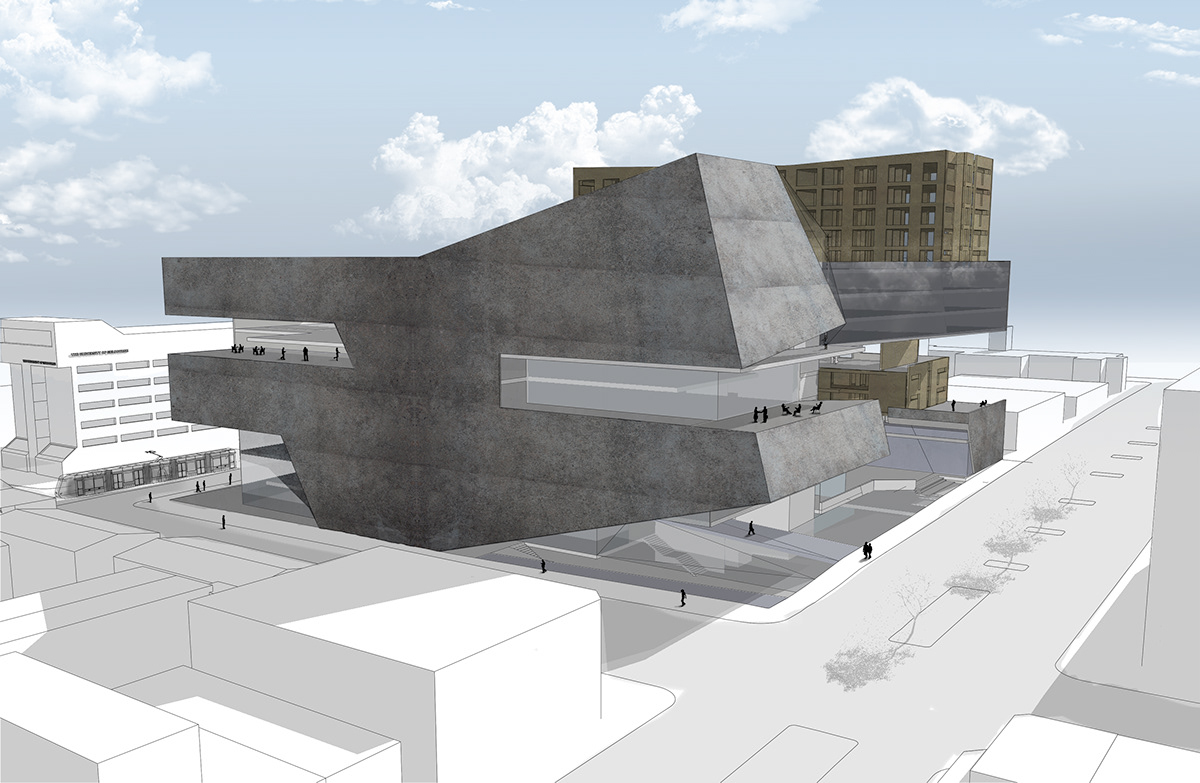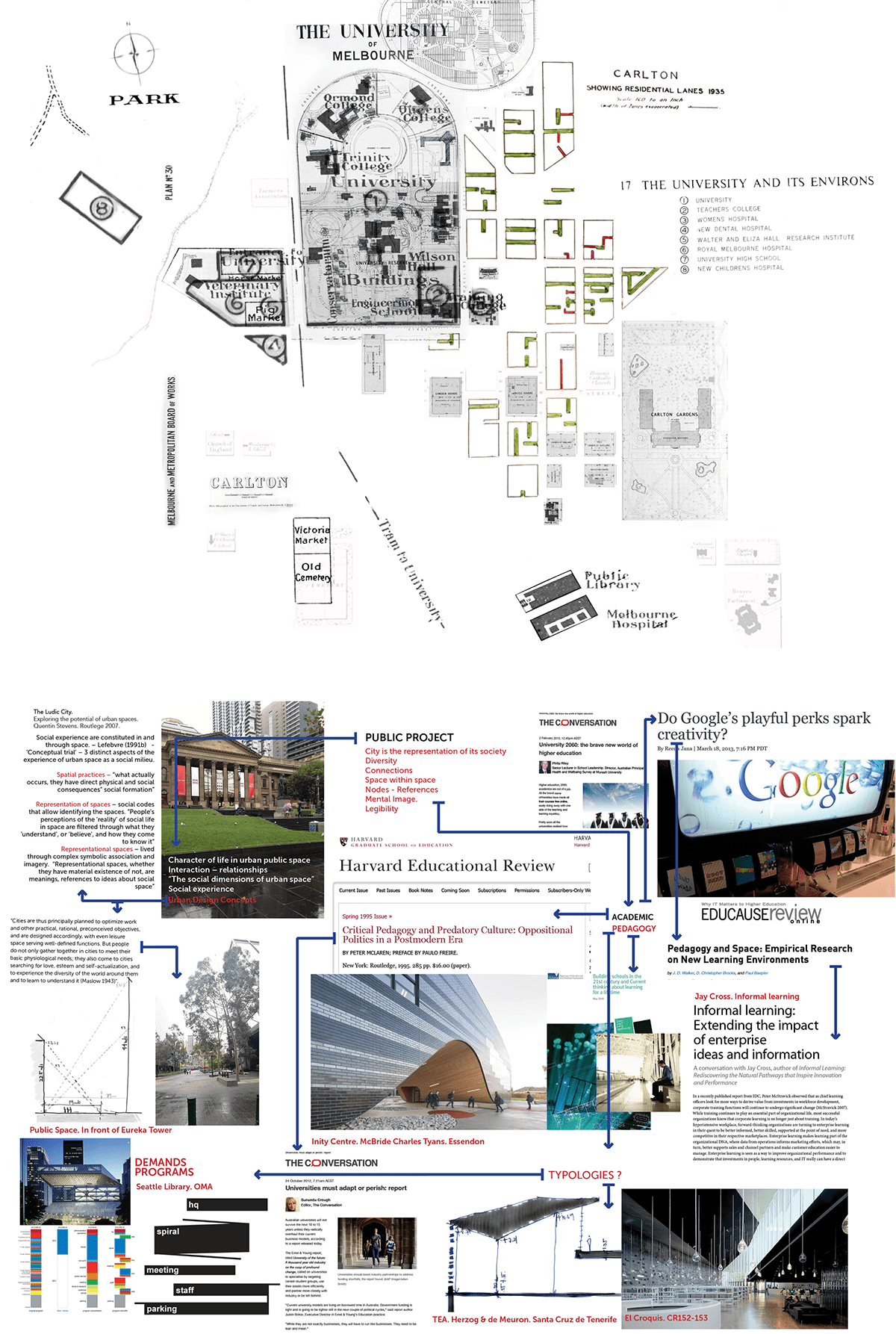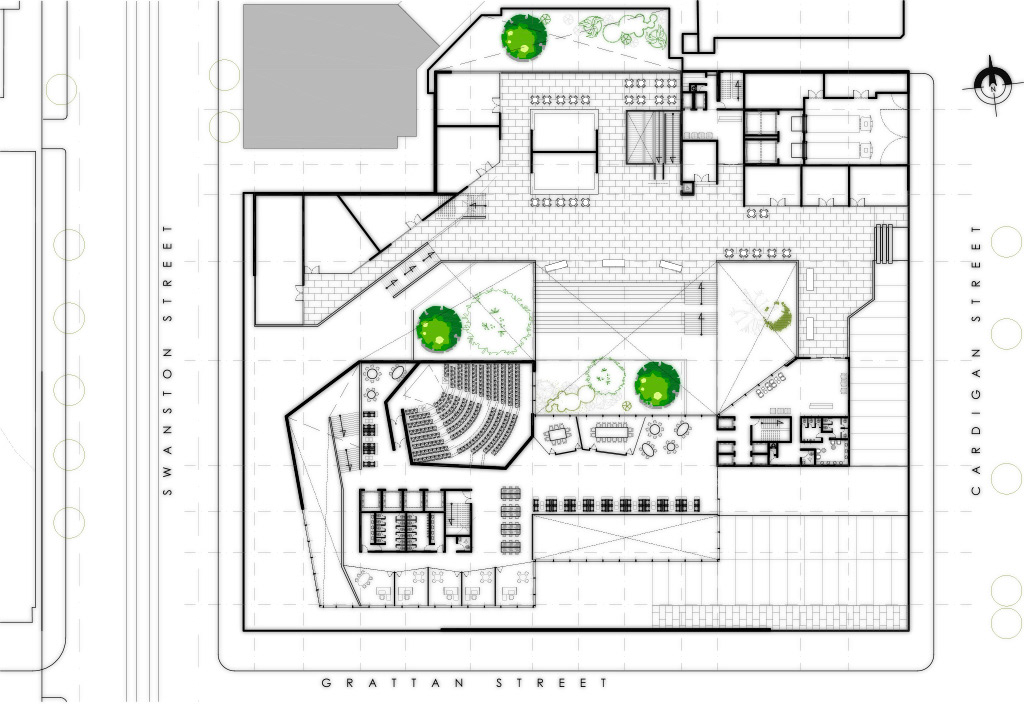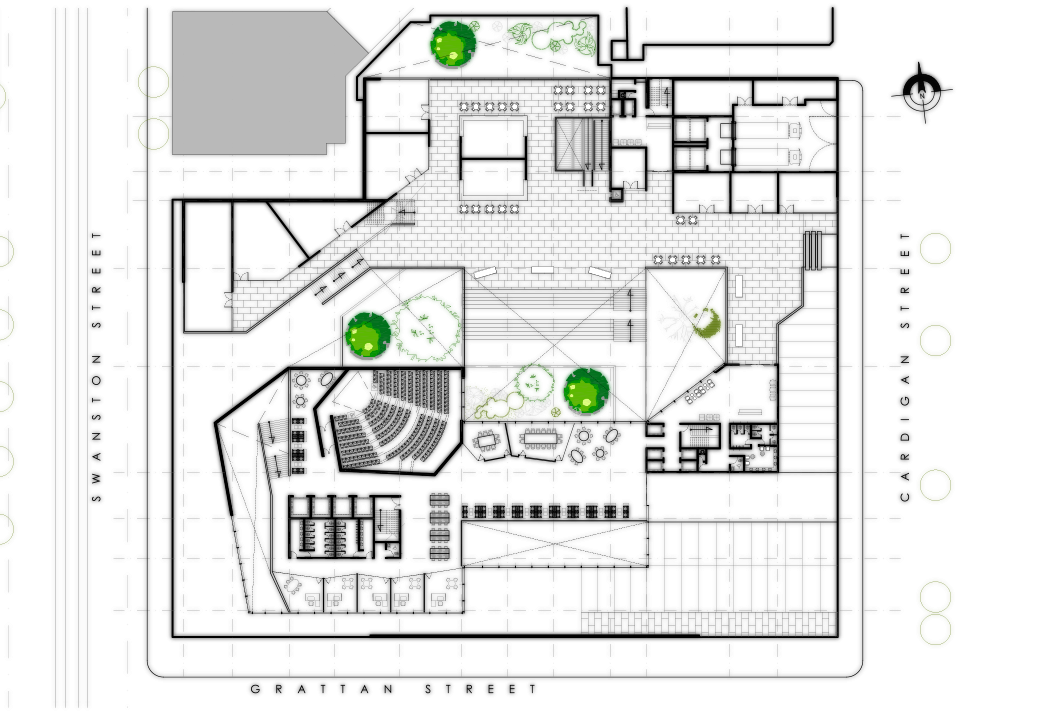Studio Project.
FORUM

Tesis
SHAPING THE FUTURE
Education is the 3rd largest industry contributing to the Australian Economy. Business is shaping the future of academia. Creation of virtual schemes such as distant courses are guiding learning processinto isolated practices, concerned mostly to meet the business’ growing demand, challenging the future and quality of academia. The importance of human interaction and co-location in the processes of learning and creation of knowledge have been researched and tested. Companies such as Google are focused on foster human interaction as the key to success. Could architecture be the conductor to regain the spaces lost in virtual education and put back human interaction as the key to improve education?

Interdisciplinary readings, projects and research helped to shape the project conceptual aim.
(top) Mapping the history of Melbourne University, finding interesting the "introduction" of public spaces.
(bottom) Text Net of resources and precedents.

ANALYSIS - PROCESS
40.000m2 mixed used building for the University of Melbourne, where 18.000m2 are academic purpose, 15.000m2 for commercial and the remaining 7.000m2 for retail, café, supermarket and public space.
the first questions arising are about the changes in the academic world. Concerns about typologies and the role of Universities as institutions in societies are included in the brief.


Opening up the knowledge to the public.
DESIGN OUTCOME
SITE PLAN

The university building as a channel for sharing knowledge and resources.


Interior spaces that belong to the public realm.
PLANS - SECTIONS - ELEVATIONS

Ground Floor Plan.

Plan. Level 1

Section. Parallel to Grattan Street showing the open public space.

Section. Parallel to Grattan Street across the building.


Elevations. (top) Swanston St. (middle) Grattan St. (bottom) Cardigan St.

Corner of Swanston St.

View from Cardigan St.

Baloon View from Cardigan / Grattan St.
